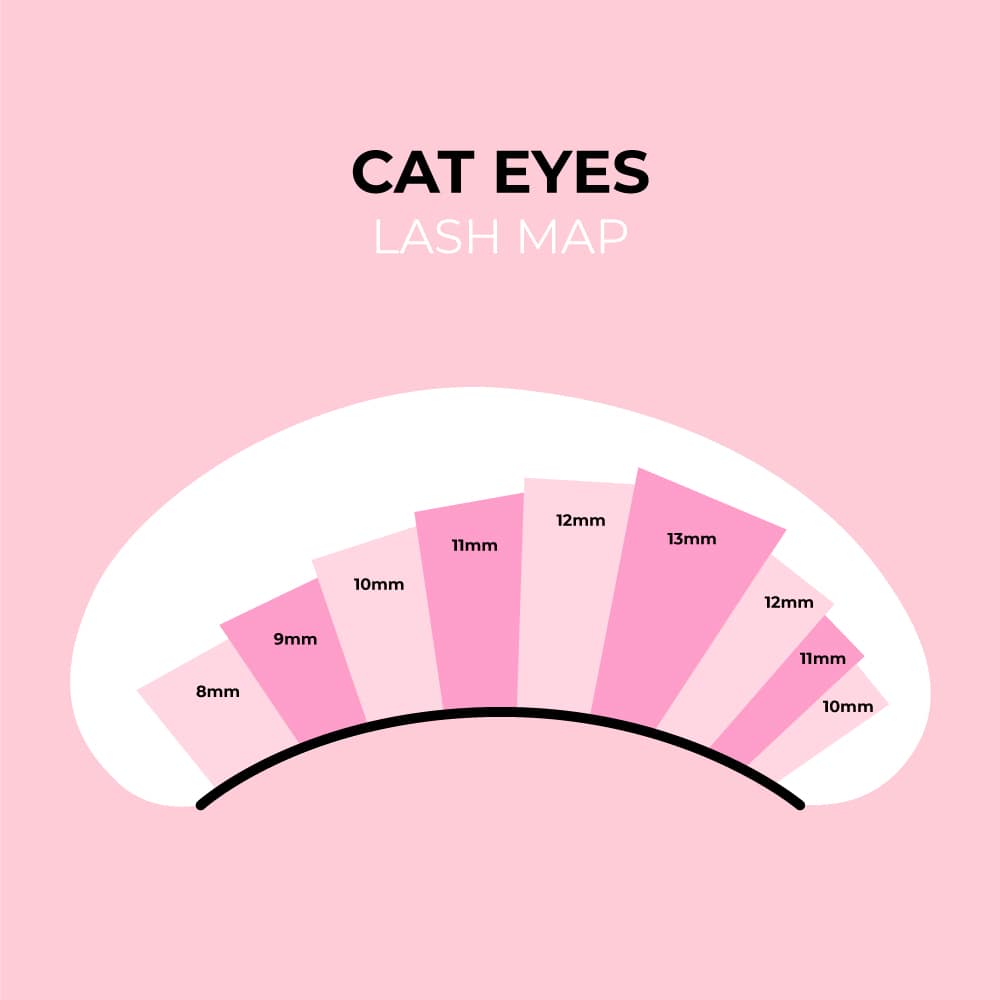
The journey for a fuller look: eyelash extensions Volume mapping
Eyelash Extension Volume Mapping
Creating the perfect lash extensions that maximize the beauty of each client's eyes is an art. A lash stylist's job does not end with simply applying lash extensions but creating customized looks for clients that consider the eye shape and desired look. In addition, a lash stylist needs to know how to navigate different curl and length options for each particular client.

Before beginning lash mapping, many aspects must be assessed appropriately. Lash mapping guides have proven to be very effective in helping lash techs lay down the essential groundwork. Thankfully lash mapping guides exist that help lash artists navigate which technique to use for different eye shapes. However, the true mark of an expert lash stylist lies in their ability to create customized looks for clients.
The first is eye shape: Figure out what category of primary eye shapes your clients' can be placed under. It can be round, almond, or monolid eyes. Next, you can categorize them into hooded, large, small, or protruding.
The next one is eye angle: This is also important because it helps determine whether our client's eyes are downturned, upturned, or straight. The third is eye spacing, by assessing whether the eyes are wide-set or narrow-set.
Natural lash strength: is another critical factor that must be considered while mapping. It helps assess whether the clients' natural lashes are strong enough to handle the added weight of long lash extensions Volume. For every decent lash stylist, the health of the clients' natural lashes is the topmost priority.
Natural lash curl: is also something that needs to be considered while mapping. It is essential to know whether the natural lashes are curled or straight while applying extensions. And finally, brow shape and face shape are also important factors when choosing the correct mapping technique.
After you have carefully prepared, we carry on to the process of lash mapping. There exist different types of mapping techniques catered to different eye shapes.
Cat Eye Lash Map

In this mapping technique, we begin by placing the shortest extensions on the inner corner of the eye that progressively gets longer along the lashes. Finally, the longest lash extensions end up on the outermost corner of the lash line, resulting in a dramatic winged look. This look has been the most popular among clients for bringing a playful look to the eyes while giving a luscious look to the lashes.
Squirrel Eye Lash Map

Instead of placing the longest eyelash extensions Volume on the outermost section of the lash line, squirrel lash mapping puts them two-thirds way along, with the extensions getting shorter once again towards the end. This suits people who have downturned eyes.
Doll Eye Lash Mapping

In this one, lash stylists are known to utilize the longest lash extensions with the most curl in the middle section of the lash line. This gives the client an open eye shape and accentuates their natural lashes instead of going with the dramatic look. Again, it is primarily for people with almond or wide-set eyes.
It is not necessary for stylists to strictly adhere to the guidelines of different mapping techniques; instead, they are free to adapt to their clients' changing desires and eye shapes. Mapping helps achieve the maximum lash density while seemingly maintaining the natural flair.
There is no doubt that lash mapping is necessary for eyelash extensions Volume. Nobody wants the unnatural look that comes with placing identical lengths and curl lashes Volume along the whole lash line. The hype behind lash mapping is well deserved. Lash Mapping also leaves much more room for stylists to experiment with different artistic styles and truly master the art of lash extension.
Recent Blog Posts

How to Create Spikes with Camellia Lashes: A Lash Artist’s Guide
Spikes are having a serious moment, from anime-inspired sets to those sleek wet-look styles. But nailing the perfect spike (clean, consistent, not clumpy) takes the...

Meet Curacoro: LLBA Transitions To A New Brand With A Bold New Look
Instagram Facebook Website Meet LLBA’s Bold New Look: Meet Curacoro LLBA Professional is thrilled to announce a bold new brand transformation that respects our roots, embraces...

Are Brown Eyelash Extensions Really Worth the Hype?
Brown eyelash extensions have taken the beauty industry by storm and become a 2024 trendy choice, with sets ranging from ombre lashes to natural lashes....























Leave a comment